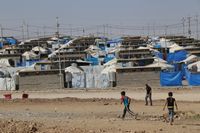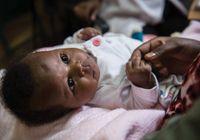
Photo credits: UNICEF/NYHQ2014-1932/Anmar
Key Points
- At the onset of a humanitarian response, the health sector/cluster should identify an organization to lead the SRMNH response; if this does not occur, attend the health/cluster meetinginfo and advocate the establishment of a SRHabbreviation working group under a lead agency.
- Undertake a situation analysis to develop a comprehensive understanding of newborn health related needs, services, programs and gaps in the crisis-affected setting. This involves familiarizing yourself with relevant national policies, protocols, clinical guidelines, tools and training materials; advocating for the inclusion of newborn health into health assessments; and assessing the availability and capacity of facilities, supplies and staff.
- Use the findings from the situation analysis to inform the development of a coordinated strategy and response plan to deliver quality and respectful newborn health services; identify, engage and partner with government, local, development and other agencies, including those supporting maternal health initiatives.
- Identify and support a partner with expertise in (M&Eabbreviation) to develop an overall M&Eabbreviation plan that utilizes data from a variety of sources, including pre-crisis mortality and morbidity statistics, facility-related data, and process and outcomes data related to health program implementation.
Integrating newborn care into a humanitarian response requires prioritization, planning and persistence. This chapter describes the issues and questions to be considered at the national level (or, where appropriate, the inter-country level) to support the effective development, implementation, monitoring and evaluation of newborn health services in humanitarian settings. Ideally, newborn health services should be integrated into national emergency preparedness and response plans prior to a crisis. However, the steps outlined below may be implemented at any point during the humanitarian response (before, during or immediately following a crisis).

